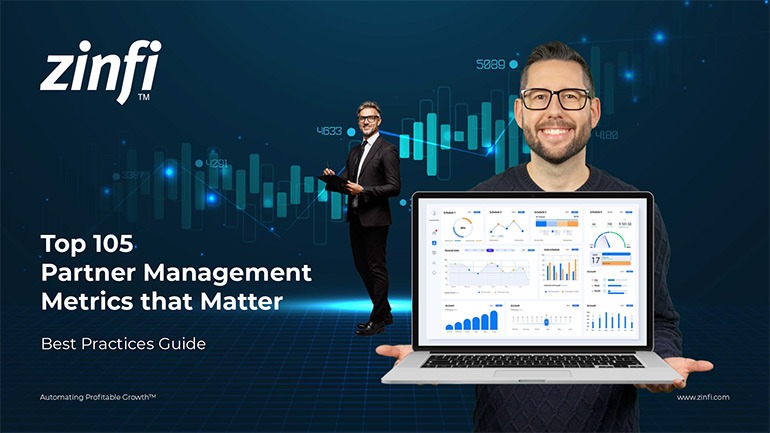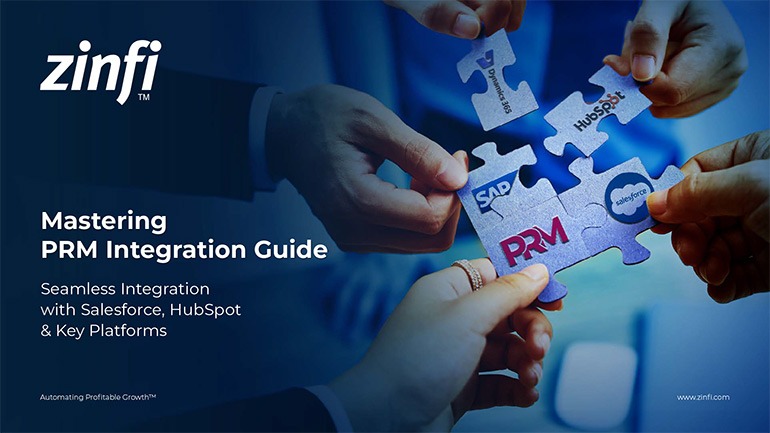Glossary - How to - Ecosystem Management
How to Implement Effective Ecosystem Management?
Introduction
Ecosystem management is a strategic approach to maintaining and improving ecological systems while balancing environmental, economic, and social needs. This method ensures sustainable resource use, biodiversity conservation, and resilience against environmental changes. In partner ecosystems, ecosystem management involves nurturing collaborations among businesses, suppliers, distributors, and service providers to optimize operational efficiency and growth.
In Partner Relationship Management (PRM), ecosystem management is crucial in streamlining communication, data sharing, and operational efficiency across multiple stakeholders. With automated PRM solutions, organizations can better manage their partner networks, ensuring sustained growth, enhanced innovation, and competitive advantages in the market.
Key Takeaways:
Develop a Strategic Framework:
- Identify key ecosystem stakeholders and their roles.
- Define long-term goals for sustainability and profitability.
- Implement governance models to maintain a balance between ecological and economic factors.
- Utilize PRM tools for real-time insights and data-driven decision-making.
Enhance Stakeholder Collaboration:
- Foster transparency and communication across ecosystem partners.
- Establish clear guidelines for responsibility-sharing and resource allocation.
- Leverage automated PRM platforms to streamline partner onboarding and engagement.
- Encourage continuous learning and knowledge sharing to optimize partnerships.
Leverage Technology for Optimization:
- Use data analytics to monitor ecosystem performance.
- Implement AI-driven insights for predictive analysis and strategic planning.
- Utilize cloud-based PRM software to enhance partner interactions and workflow automation.
- Adopt IoT and blockchain technologies to improve traceability and security within ecosystems.
Ensure Sustainable Practices:
- Integrate eco-friendly practices within business operations.
- Establish policies that support carbon footprint reduction and waste minimization.
- Encourage partners to adhere to sustainability guidelines and certifications.
- Align corporate social responsibility (CSR) initiatives with ecosystem goals.
Monitor and Adapt Continuously:
- Regularly assess ecosystem health through performance metrics.
- Adapt strategies based on market trends and partner feedback.
- Utilize PRM dashboards for dynamic reporting and continuous improvement.
- Implement agile methodologies to respond to environmental and business shifts efficiently.
Summary of Key Takeaways:
Effective ecosystem management requires a strategic approach that balances sustainability, stakeholder collaboration, and technological advancements. Organizations must define clear objectives, leverage PRM solutions for streamlined operations, and continuously monitor performance metrics to adapt to market changes. Sustainable practices should be integrated across all industry verticals, ensuring long-term environmental and economic stability. By implementing these best practices, businesses can foster resilient ecosystems that support innovation and growth.
Key Examples:
- Automotive Manufacturing:
- Implementing circular economy models to optimize resource utilization.
- Using AI-driven supply chain management to enhance efficiency.
- Encouraging sustainable sourcing practices among automotive suppliers.
- Consumer Electronics:
- Partnering with e-waste management firms to promote recycling.
- Enhancing customer engagement through omnichannel partner networks.
- Leveraging cloud-based PRM solutions for vendor coordination.
- Energy Production:
- Utilizing blockchain for transparent energy transactions.
- Partnering with renewable energy providers for sustainability initiatives.
- Monitoring ecosystem health through IoT-powered smart grids.
- Financial Services:
- Enhancing data security through blockchain-based transaction ecosystems.
- Developing fintech partnerships for seamless digital banking experiences.
- Using AI-driven risk management tools for ecosystem stability.
- Food and Beverage:
- Establishing farm-to-table partnerships for sustainable sourcing.
- Implementing supply chain transparency using PRM software.
- Encouraging waste reduction programs among partner networks.
- Healthcare Services:
- Enhancing patient care through interconnected health ecosystems.
- Implementing data-driven patient management solutions.
- Partnering with biotech firms for innovative healthcare solutions.
- Information Technology:
- Managing SaaS partner networks using cloud-based PRM platforms.
- Utilizing AI-driven threat detection for cybersecurity ecosystem management.
- Encouraging API integrations for seamless business collaborations.
- Pharmaceutical Development:
- Streamlining clinical trial collaborations with ecosystem partners.
- Ensuring compliance with regulatory frameworks through automated tracking.
- Using data analytics to optimize drug distribution networks.
- Retail Industry:
- Enhancing customer experience through omnichannel ecosystem strategies.
- Utilizing AI for demand forecasting and inventory management.
- Partnering with sustainable packaging firms to reduce environmental impact.
- Telecommunications:
- Managing 5G infrastructure partnerships for network expansion.
- Using AI-powered analytics for customer engagement and service optimization.
- Establishing IoT-driven smart city collaborations for sustainable urban development.
Conclusion:
Ecosystem management is an essential strategy for businesses looking to optimize partnerships, enhance sustainability, and foster innovation. Organizations can build resilient partner ecosystems that drive long-term success by leveraging technology, fostering collaboration, and ensuring sustainability practices. Implementing PRM solutions further enhances the ability to manage ecosystem relationships effectively, ensuring continuous improvement and adaptability in a dynamic market landscape.
Associated Keywords:















